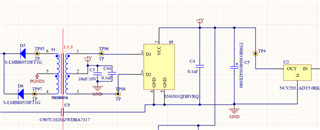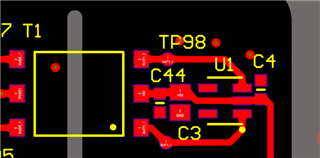Other Parts Discussed in Thread: SN6501
Hi Office,
Good Day!
I have used SN6501 in my isolated part. When the product is manufactured, there is a current deviation issue happened in some cases.
I set an EOL spec as 65-80 mA for static current. But it has a current deviation, generally up or down by 10mA.

Here are the actions I took:
1. Replace U1 SN6501 with a new one, and it goes back to normal.
2. Change the U1 on the high one with the low one, and both of them go back to normal.
3. Resolder the U1 and change nothing, and it keeps high/low bias.

Thanks in advance!




